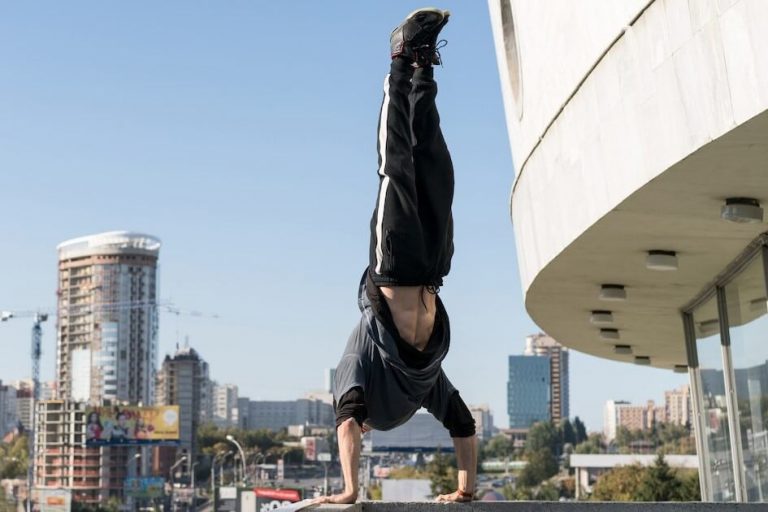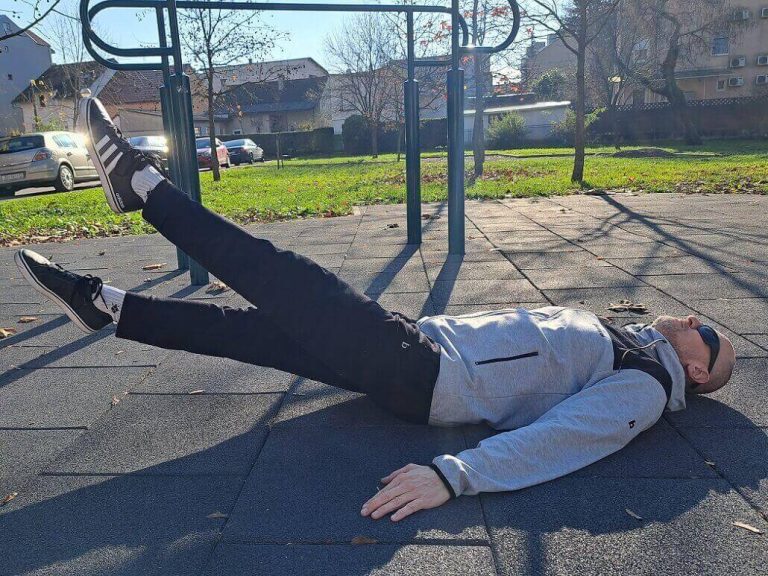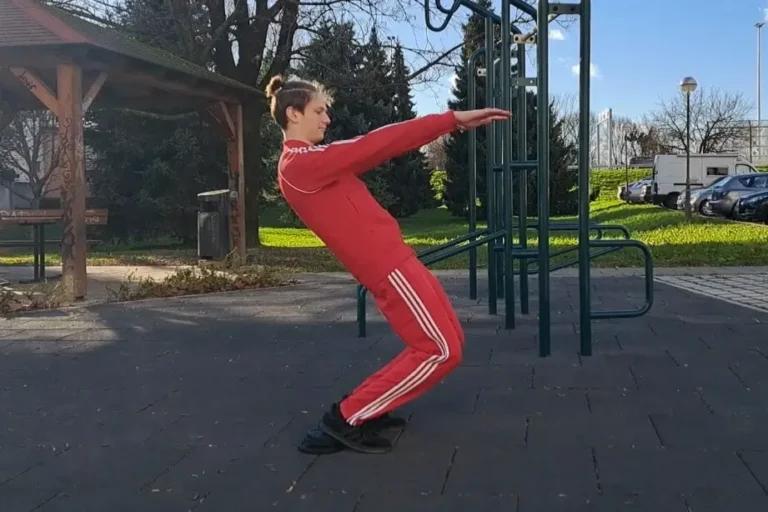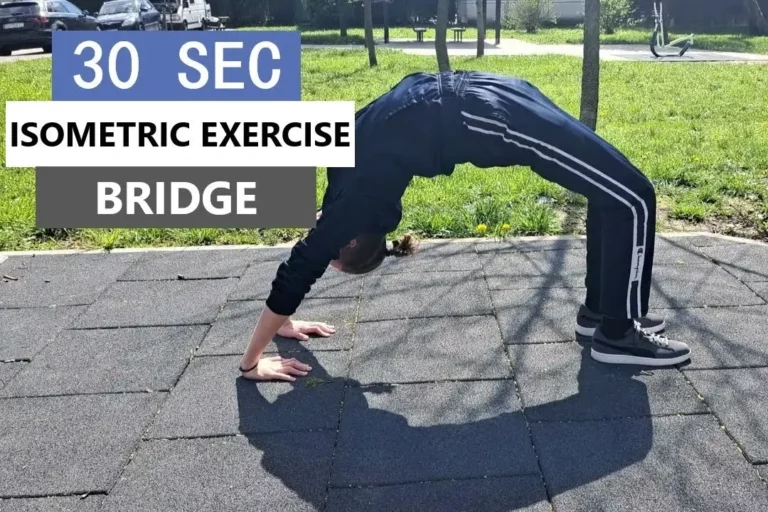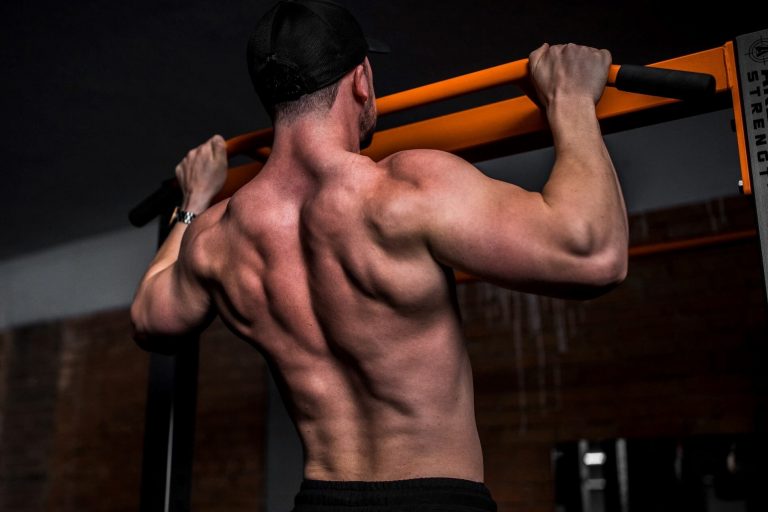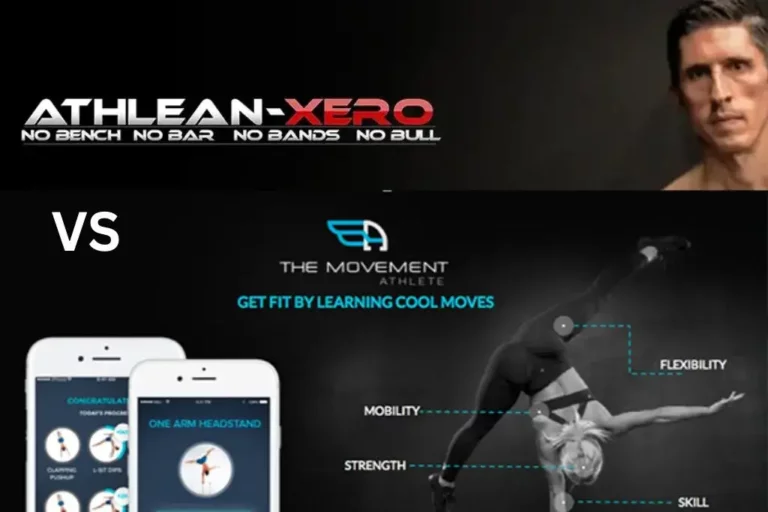Best 10 Pull-Up Bar Exercises: With Sets And Reps
So what are the best pull-up bar exercises for building upper body strength?
Pull-ups and chin-ups almost instantly pop up in your mind when you think about it. But those exercises are mostly targeting your upper back and biceps.
There is so much more you can do with a pull-up bar. Using a pull-up bar for building your abs, hip flexors, shoulders, and lower back muscles will be a welcome addition to your workouts.
So let’s examine the top 10 pull-up bar exercises.
What Are The Best 10 Pull-Up Bar Exercises
The idea behind this list of the 10 best pull-up bar exercises is to create a selection of skills that can be used to create a complete pull workout.
So, here we will examine the skills that will target your upper back and biceps, abs and hip flexors, and lower back and shoulder muscles.
This will create a solid foundation for a well-rounded pull workout you can actually use in your next training session. The exercises are listed from easier to harder for each muscle group.
1. Dead Hang
Let’s start with the easiest exercise in this list. I can’t think of an easier one than just hanging from a bar. Can you?
So dead hang will be the first exercise in the list. The one targeting your upper back and help you improve your grip strength.
How To Do A Dead Hang
- Grab onto a pull-up bar using an overhand grip (palms facing away from you)
- Extend your toes down and engage your abs (think about a dead hang as a hollow hold position on a bar)
2. Chin Ups
Chin-ups are great for building your biceps and upper back muscles. If you compare it to pull-ups, chin-ups will work your biceps more and your upper back a little bit less than pull-ups.
How To Do Chin Ups
- Grab a bar using an underhand grip (your palms facing toward you)
- Pull your body up until your chin is over the bar
- Lower down with control and try to reduce swinging as much as possible
3. Pull Ups
This list would not be complete without a calisthenics classic – pull-up. It’s an excellent exercise primarily targeting your latissimus dorsi.
How To Do Pull-Ups
- Grab a pull-up bar with your palms facing away from you
- Lift yourself up, so your chin reaches over the bar
- Lower down slowly
If some of those exercises were too hard you can check pull-up progression for a selection of easier exercises. If those skills were easy, you can explore more difficult ones in a muscle-up progression.
4. Hanging Knee Raises
Now, we covered exercises for your upper back. Let’s move on to skills targeting your abs and hip flexors.
Hanging knee raises will do just that. It’s a beginner-friendly skill you can easily add to your workouts. If hanging knee raises are still too hard for you, you can explore easier moves from a laying leg raise progression filled with exercises done on the floor.
How To Do Hanging Knee Raises
- Start in a dead hang position
- Raise your knees toward your chest and raise your butt up in the air at the end of the movement
- Slowly lower your legs back to the starting position
5. Hanging Knee Side Raises
With hanging knee raises you were working on your abs and hip flexors. Hanging knee side raises will work your obliques. Those are the muscles at the sides of your core. Working your obliques will help avoid muscular imbalances and help improve the stability of your core.
How To Do Hanging Knee Side Raises
- Start in a dead hang
- Raise your knees to your sides (to your left and to the right)
- When you do it on both sides it counts as one rep
6. Hanging Leg Raises
Hanging leg raises will be a harder version of a hanging knee raise exercise. So, the same target muscle groups but harder to do.
How To Do Hanging Leg Raises
- Start in a dead hang position
- Lift your legs up in front of you until they are parallel to the ground
- Lower your legs slowly back to the starting position
7. Toes To Bar
Hanging leg raises will be a harder version of a hanging knee raise exercise. So, the same target muscle groups but harder to do.
How To Do Toes To Bar
- Start hanging from a bar using an overhand grip
- Lift your legs up in front of you and keep on lifting until you touch the bar with your toes
- Slowly lower your legs down
If hanging leg raises are too easy for you, you can explore the front lever progression that is filled with loads of challenging exercises.
8. Inverted Hang
We covered exercises for your upper back, biceps, hip flexors, and abs. Now it’s time to examine the skills for your lower back and shoulders.
The first one is an inverted hang. Getting into an inverted hang position will work more on your lower back. Holding an inverted hang position will work more on your core and shoulders.
This is a pretty challenging exercise. If it’s too hard for you, you can check out easier exercises from a bridge progression.
How To Do Inverted Hang
- Start in a dead hang position
- Lift your knees toward your chest and follow with your butt
- Lift your butt more up in the air and extend your legs up
- Hold this position as long as you can
9. Skin The Cat
After a static inverted hang, it’s time for a dynamic skin the cat exercise (which by the way has nothing to do with your neighbor’s pet).
How To Do Skin The Cat
- Start hanging from a bar with an underhand grip
- Raise your knees up toward your chest and rotate your entire body in a tuck position under the bar
- When you can’t rotate further back, return to the starting position
10. German Hang
German hang is just holding the lowest position of a skin the cat exercise.
How To Do German Hang
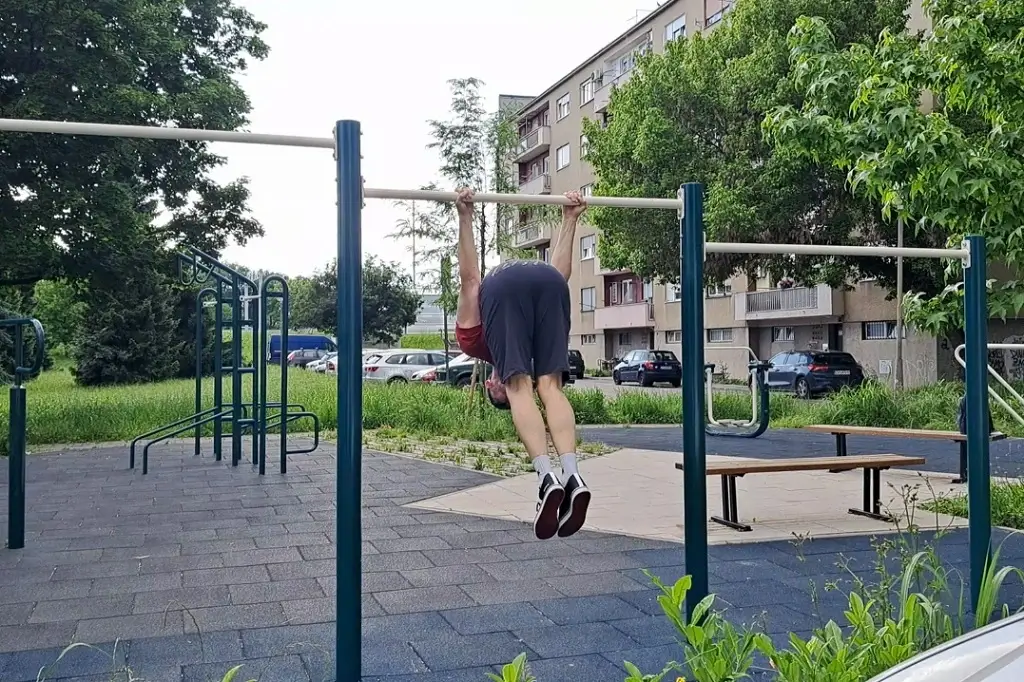
- When you rotate under the bar doing the first part of a skin the cat just extend your legs at the end of the movement
- Hold this position for as long as you can
- Rotate back or simply jump off the bar
When you master German hang you can explore harder skills in a back lever progression.
How To Select Pull-Up Bar Exercises
Now, how do you use those exercises to create a complete pull workout? You simply pick one of the exercises for each muscle group.
You should be able to do 5-8 reps in 3 sets for the exercise you picked.
Exercises targeting your upper back and biceps:
- Dead hang
- Chin-ups
- Pull-ups
List of moves targeting your abs and hip flexors:
- Hanging knee raises
- Hanging knee side raises
- Hanging leg raises
- Toes to bar
Skills for working your lower back and shoulders:
- Inverted hang
- Skin the cat
- German hang
When you pick one exercise from each group, you should have 3 exercises to work with.
Now you have to pick the next 3 exercises from each muscle group. Those exercises should be easier to do than the ones you picked previously. You add those 3 new exercises at the end of the workout.
A Complete Pull-Up Bar Exercises Workout
Now that you selected exercises, it’s time to create your workout. Let’s say, you selected the following exercises for each muscle group:
Upper back and biceps:
- Chin-ups
- Pull-ups
Abs and hip flexors:
- Hanging knee side raises
- Hanging leg raises
Lower back and shoulders:
- Inverted hang
- Skin the cat
Now that we have exercises ready, let’s use those to create a complete workout:
- Start with a short 5-10 minutes warm-up session
- Do pull-ups – 3 sets with 5-8 reps
- Rest for 2-3 minutes
- Do hanging leg raises – 3 sets with 5-8 reps
- Rest for 2-3 minutes
- Do skin the cat – 3 sets with 5-8 reps
- Rest for 2-3 minutes
- Do chin-ups – 3 sets with 5-8 reps
- Rest for 2-3 minutes
- Do hanging knee side raises – 3 sets with 5-8 reps
- Rest for 2-3 minutes
- Do inverted hang – 3 sets with a 30-second hold in each set
- End a workout with a short 5-15 minute cool-down stretching routine
Here’s how you can use this list of 10 pull-up bar exercises to create your own custom workout. It’s a complete workout with all sets, reps, and rests. If some of those exercises are too hard or too easy, you have loads of other exercises you can select from the progressions described above.
Pull-Up Bar Exercises Summary
So, that is the list of some of the most commonly used pull-up bar exercises. You can use those exercises in the workout laid out above, or use any of the exercises and add it to your existing workout routine.
Eat balanced protein-rich meals in a slight caloric surplus if you are looking to build muscle mass. If you look to lose weight, eat balanced meals with a slight calorie deficit.
Remember to rest between workouts. Only when you rest do your muscles grow. To speed up your recovery, think about taking a cold shower after the workout.
So, work well, eat well, and take plenty of rest. Results will follow!

